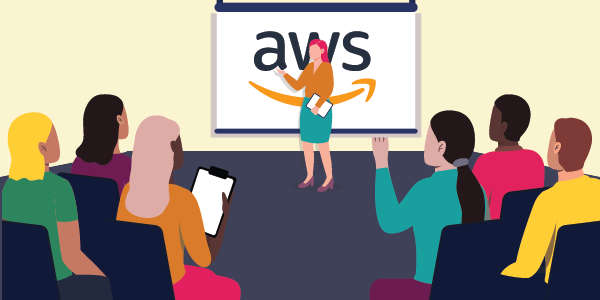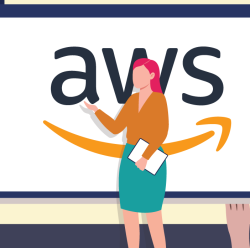AWS Summit Spotlights Cloud Innovations

Every year, the AWS Summit brings the cloud computing community together to connect, collaborate, and learn about new and existing AWS technologies and services.
The 2022 summit brought businesses and global public sector stakeholders to Washington, D.C. in May to share the successes of cloud technologies for use cases, including those in health. Three sessions specifically addressed how cloud technologies have helped or could potentially help CMS reduce manual processes, incorporate new technologies, and cut costs.
Advance Global Health Equity through Technology primarily focused on the Health Equity Initiative. This program is part of AWS's $40 million, three-year commitment to help customers leverage Cloud technologies to advance global health equity and improve global health outcomes.
This program focuses on supporting applications that develop culturally responsive solutions to:
- Increase access to health services by having telehealth and other providers available to serve those in need
- Reduce disparities by addressing social determinants of health
- Leverage data to promote equitable and inclusive systems of care
One of AWS's most touted highlights is CMS's Emergency Triage, Treat, and Transport (ET3) model. ET3 allows patients to receive better access to care, while reducing unnecessary hospital intakes, and cutting unnecessary costs on ambulances and hospitals throughout the country. ET3 allows beneficiaries to receive person-centered care safely while having greater control of their healthcare through the availability of more options.
Use AWS AI Services to Extract Information From Documents detailed how Machine Learning (ML) provides options when extracting complex information from documents, including scanned insurance claims, healthcare claims, and legal contracts. Amazon Kendra and Amazon Textract cut time in delving into unstructured data and developing custom search capabilities for data using ML.
According to Amazon, Amazon Kendra allows "developers to add search capabilities to their applications so their end users can discover information stored within the vast amount of content spread across their company." In addition, Amazon Textract uses capabilities beyond simple optical character recognition (OCR) to verify and extract data from forms and tables.
Traditionally, OIT has manually extracted data from scanned documents and increasingly through simple OCR software. Tools like Amazon Textract and Kendra can automate these manual processes and even remove or hide personal identifiable information (PII) to protect beneficiary information.
Choosing the Right Cost-Effective AWS File System covered three main reasons organizations should consider building applications in the cloud: first, to lower costs; second, to increase agility; and third, to maximize efficiency. OIT is migrating applications to the cloud, lowering costs through intelligent tiering, where charges are as low as $0.03 per gigabyte.
Furthermore, OIT can leverage their cloud-scale storage to process their Amazon data faster, maximizing efficiency.
To learn more about other sessions that took place, visit the AWS Event YouTube Channel.

